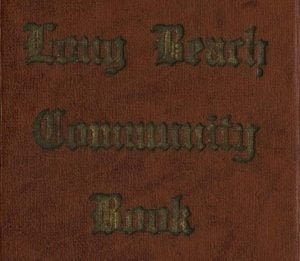The “Long Beach Community Book,” authored by Walter H. Case and published in 1948 by A.H. Cawston, is an extensive exploration of the history and development of Long Beach, California. The book is divided into two main sections: a historical narrative and biographical sketches. The first part of the book offers a detailed account of Long Beach’s evolution from its early beginnings to a thriving city. It covers various aspects of the city’s growth, including its geographical advantages, municipal governance, public facilities, educational institutions, and notable events such as epochal oil discoveries and the impact of wartime activities. The narrative also addresses challenges faced by the city, such as land subsidence and the major issue of tideland rights. The second part of the book comprises biographical sketches of significant Long Beach citizens, both past and present, highlighting their contributions to the community.

